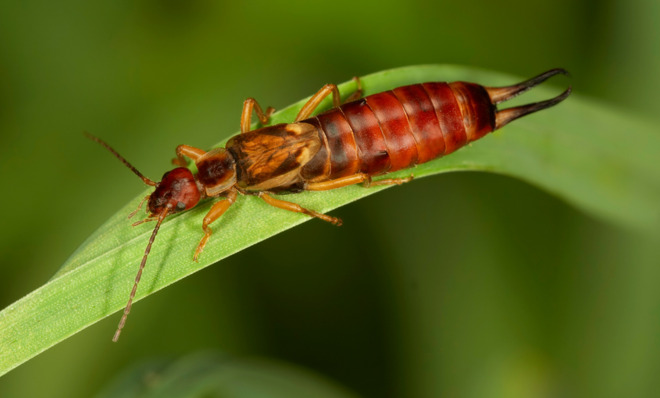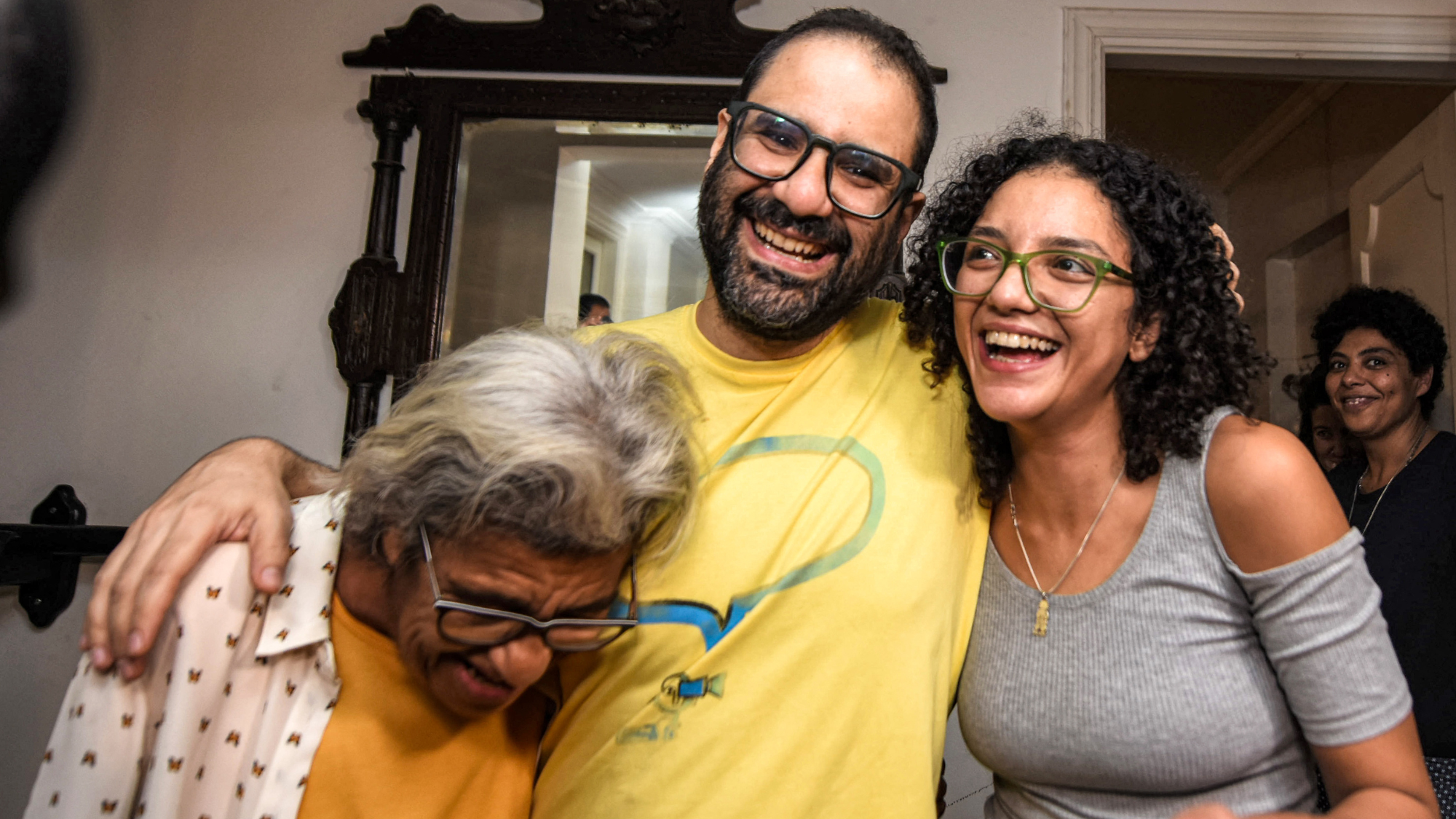How I learned to love the evil-looking earwig
Your anxieties about fearsome earwigs slithering down your ear canal and into your brain are completely unfounded

Pretty much everyone I know grew up with an unholy fear of earwigs.
The evil-looking pincers on the insect's tail were said to deliver a sting worse than a bee. And the creature's long, slender body was supposedly ideal for slinking down the human ear canal and burrowing into the brain. Get an earwig in the ear, they said, and you'd go deaf. But an earwig in the brain, well… you could wind up dead by morning.
Of course, like nearly everything I learned about nature before the internet — all bears hibernate, daddy long legs are the most venomous spiders, porcupines can shoot their quills — the Legend of the Earwig is total bunk.
The Week
Escape your echo chamber. Get the facts behind the news, plus analysis from multiple perspectives.

Sign up for The Week's Free Newsletters
From our morning news briefing to a weekly Good News Newsletter, get the best of The Week delivered directly to your inbox.
From our morning news briefing to a weekly Good News Newsletter, get the best of The Week delivered directly to your inbox.
While the insects do have a pair of Dothraki swords for pincers that they brandish like a scorpion when provoked, the humble earwig lacks a single drop of venom. Instead, earwigs use their pincers for grasping food, which puts them roughly at the same threat level to humans as chopsticks.
There's also no evidence that earwigs have ever burrowed into a human's brain, but you probably figured that part out already. An earwig would much prefer the cool underside of a log or a cardboard box in your garage to the hot, cramped dead-end that is the human ear canal. And what would an earwig want inside a brain anyway? Do we think earwigs subsist on repressed memories and Friends trivia?
Now, something tells me this alone won't win you over to the earwig's lunch table. Merely not eating our brains and not being able to sting us are traits shared by most of the creatures on Earth, and thus probably not the best basis for adoration. But what if I told you that earwigs, creepy and alien though they may seem, are actually rather doting mothers? I mean, do they eat each other from time to time and commit infanticide? Sure. They're insects, not the mom from The Wonder Years. But a new paper reveals that quite often, earwigs are downright familial.
For starters, earwig mothers tend to stick around and protect their clutch of eggs from predators and keep fungi from growing on them. When they hatch into tiny, translucent nymphs, mom then spends the next few weeks fetching food and bringing it back to the brood. This in itself is rather atypical for insects — though it may surprise you to learn that maternal care is common enough in other invertebrates, such as spiders, scorpions, centipedes, mollusks, worms, and jellyfish.
A free daily email with the biggest news stories of the day – and the best features from TheWeek.com
Evolutionary biologist Joël Meunier studies earwigs and the various ways they take care of each other. When I asked him what it's like to be the guy who works with earwigs all day, he told me he often encounters strong reactions from the public.
"People are always disgusted," he said in an email. "I then have to fight a lot to demonstrate why this insect is actually pretty cool and completely harmless."
It usually only takes one trip to his nocturnal, red-light lab before people soften up. There's just something about the sight of all those cute little baby nymphs running around.
Meunier's most recent study looks at the way the kiddos behave when mom's out hunting or, you know, salsa dancing with that guy she keeps telling the nymphs to call "Uncle Barry." Either way, while the momma earwig is out, the nymphs turn to each other for nourishment. They can acquire this in two different ways.
The first is pretty straight forward, and it's called allo-coprophagy. Quite simply, they eat each other's frass. ("Frass" is the fun word entomologists use for insect poop.) By feeding the earwigs blue food dye and yellow pollen — nymphs are translucent, remember — Meunier and his team were able to track which nymphs chowed down on the frass buffet. They also found that nymphs actually produce, or donate, more frass when they're in the company of their siblings. So not only are the poop-eating nymphs making use of a resource that's just lying around, but it seems siblings actually ramp up their production to benefit the group.
Now, that brings us to the second method of nourishment. Earwigs tend to raise their young in close proximity to other earwigs, and that means frequent brood mixing. Meunier tells me that his colleague, Mathias Kölliker, has found nymphs that wander into a foreign brood are more likely to be cannibalized, but it's also not uncommon for the little buggers to do just fine with a foster family. Interestingly, Meunier's study found that unrelated nymphs are more aggressive in seeking nourishment, which leads to them to practice proctodeal trophallaxis, or anus-to-mouth feeding.
I know, this sounds pretty distasteful to our human sensibilities, but if you're just a little earwig nymph trying to make it in the world, and you're already cool with eating poop, then why not go directly to the, uh, source?
To Meunier and other evolutionary biologists, this is fascinating territory. Not all earwig mothers stick around to rear their young, and indeed all nymphs of this stage are quite capable of taking care of themselves. In essence, these family units are important because they're not necessary. The mothers and nymphs are choosing — as much as an earwig is capable of choice, mind you — to stick together for some evolutionary benefit.
"It might be far stretched to say that earwigs will provide any insights on our own evolutionary origins," says Meunier, "but they can definitely provide important clues on the evolutionary transition from solitary to social life in animals."
Say what you will about proctodeal trophallaxis, I think this is all pretty amazing. Right now, there are probably thousands of earwigs in my own backyard raising families, eating each other, adopting orphans, and passing plates of frass around. It's like an episode of Shameless out there. And I can't turn away.
Jason Bittel serves up science for picky eaters on his website, BittelMeThis.com. He writes frequently for Slate and OnEarth. And he's probably suffering from poison ivy as you read this.
-
 Shots fired in the US-EU war over digital censorship
Shots fired in the US-EU war over digital censorshipIN THE SPOTLIGHT The Trump administration risks opening a dangerous new front in the battle of real-world consequences for online action
-
 What will the US economy look like in 2026?
What will the US economy look like in 2026?Today’s Big Question Wall Street is bullish, but uncertain
-
 Alaa Abd el-Fattah: should Egyptian dissident be stripped of UK citizenship?
Alaa Abd el-Fattah: should Egyptian dissident be stripped of UK citizenship?Today's Big Question Resurfaced social media posts appear to show the democracy activist calling for the killing of Zionists and police